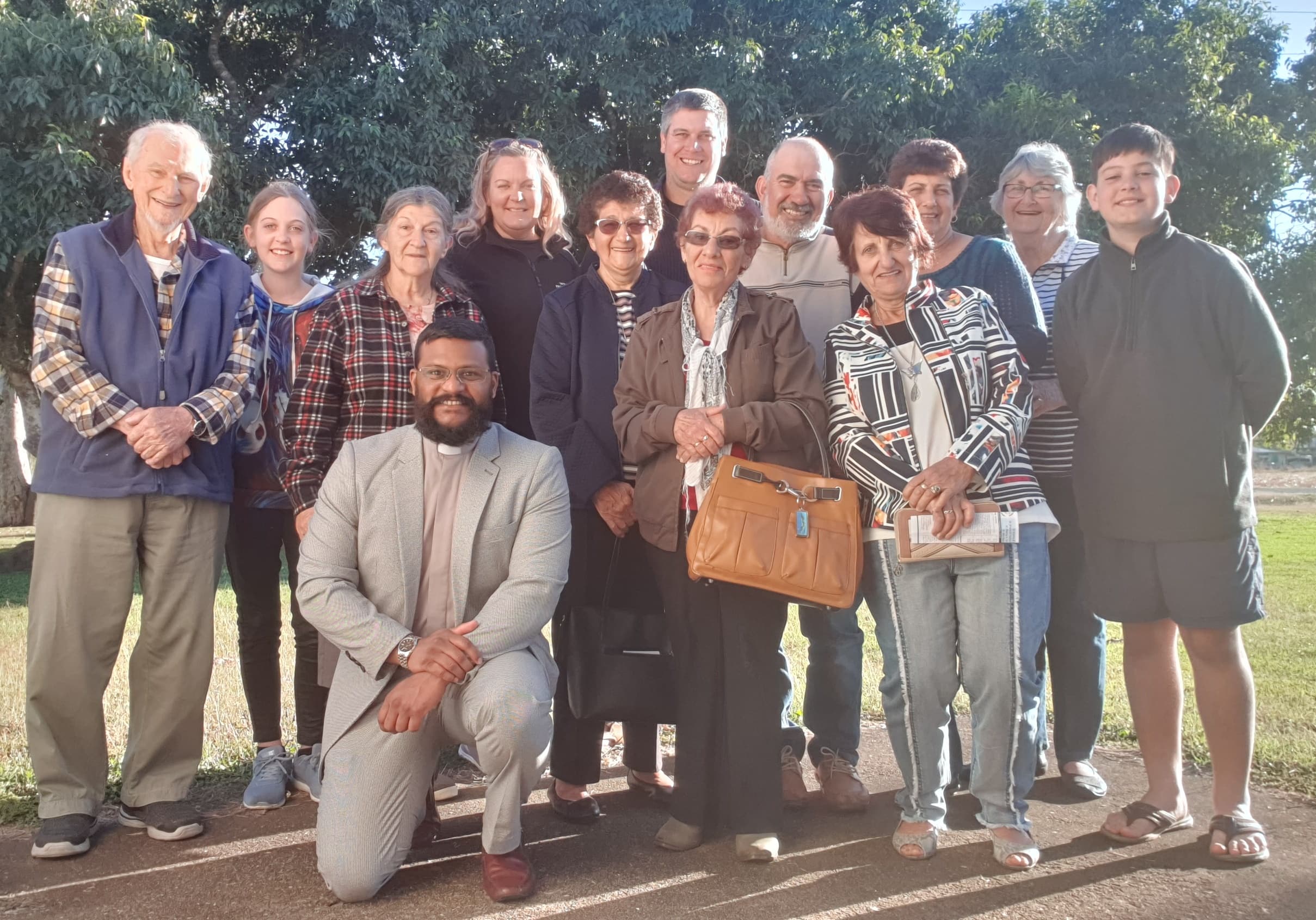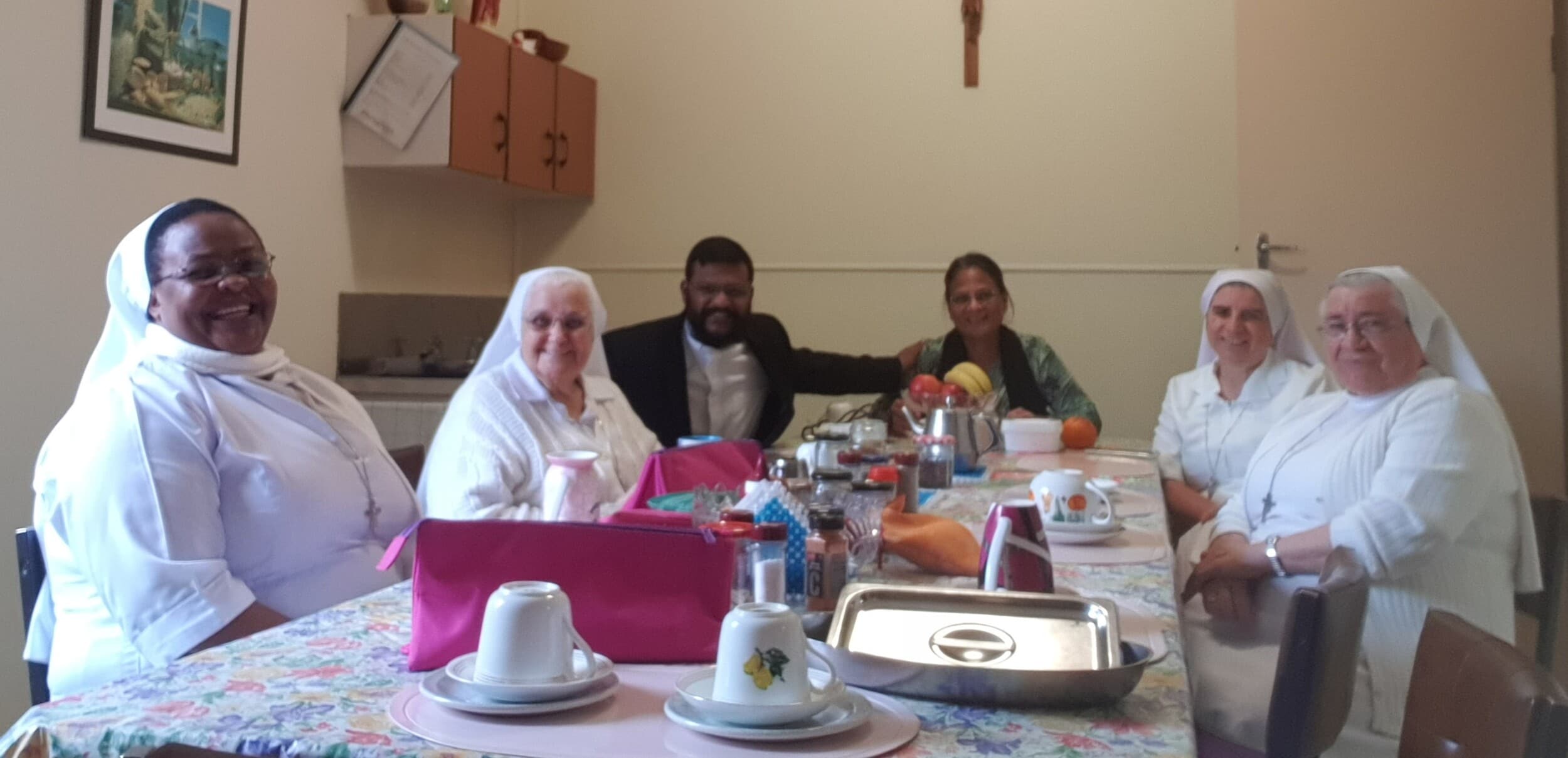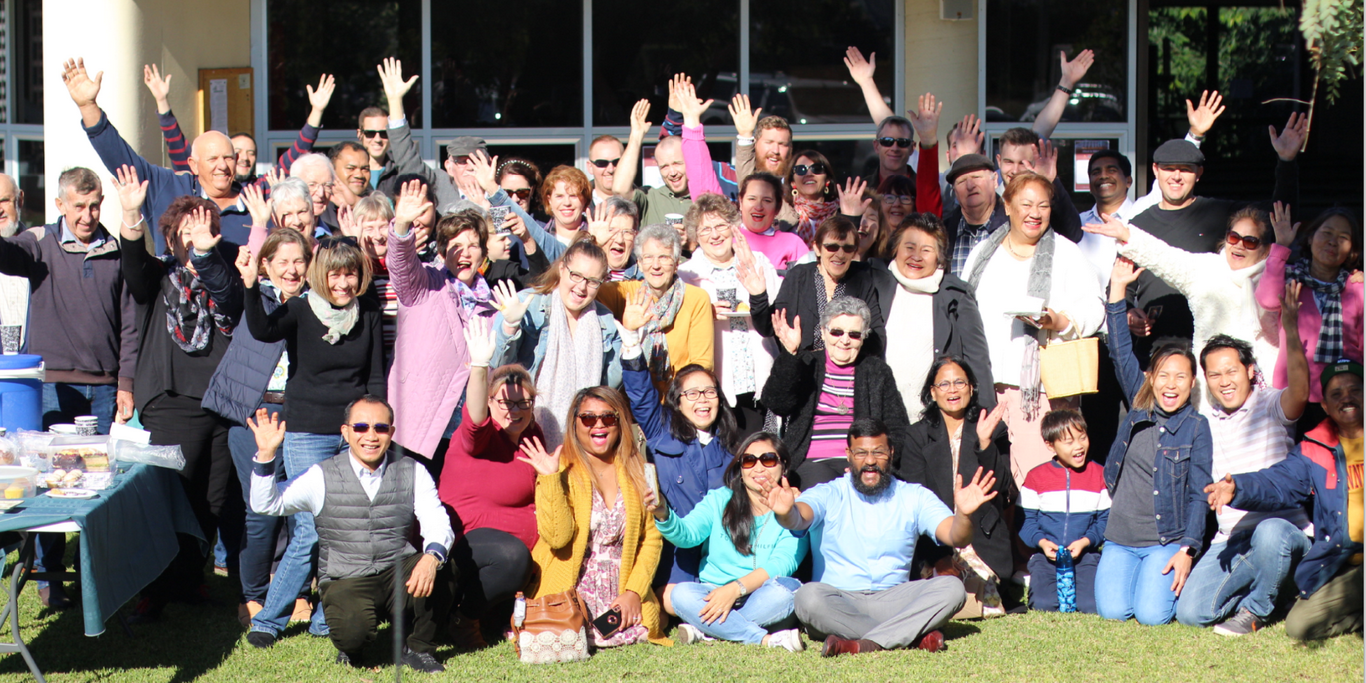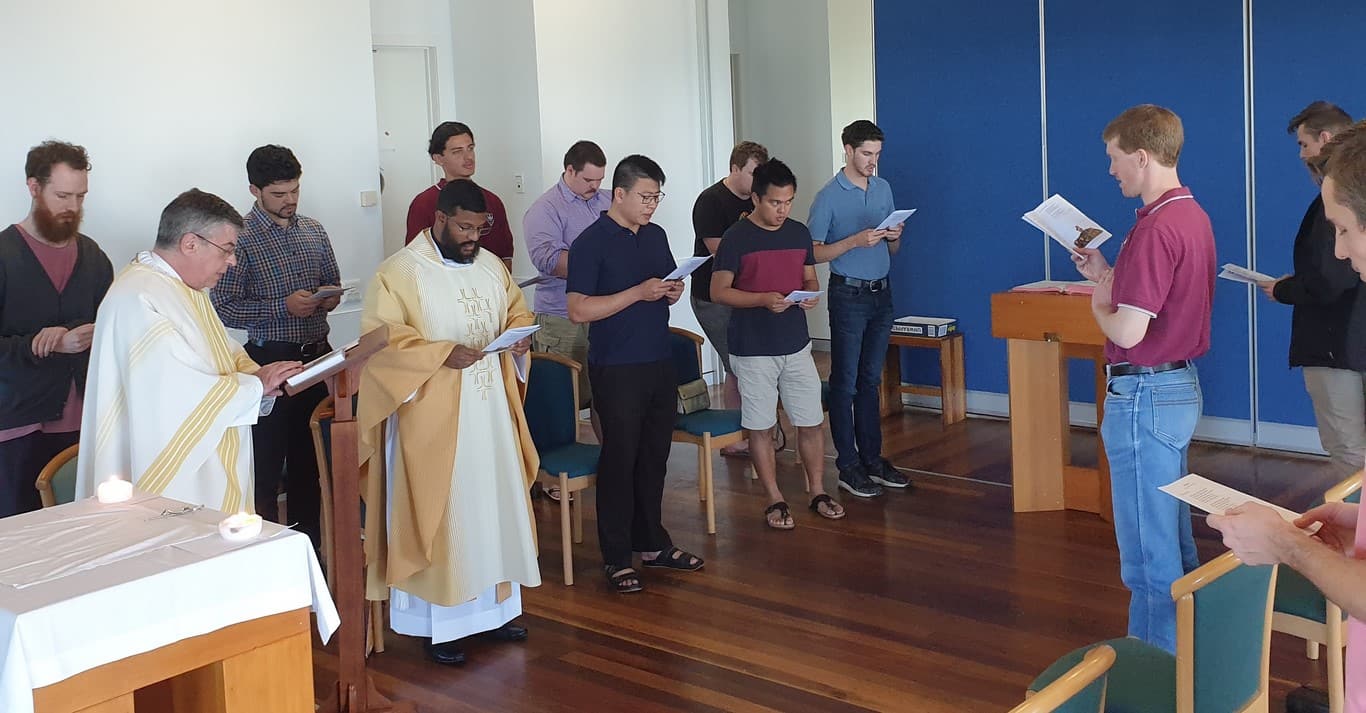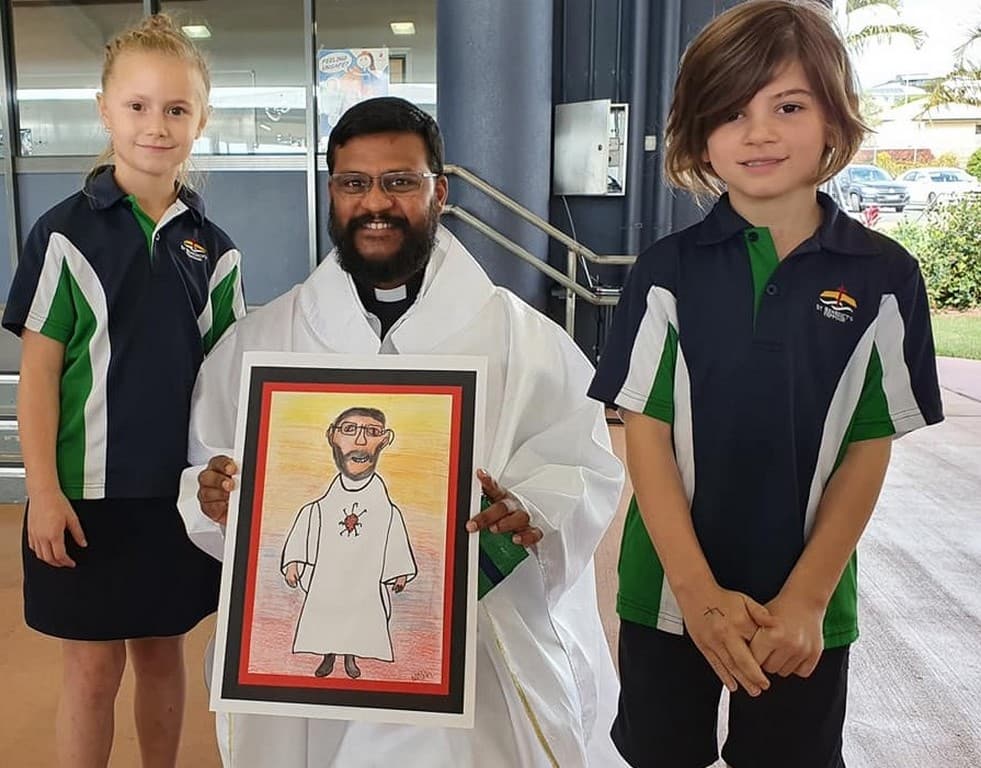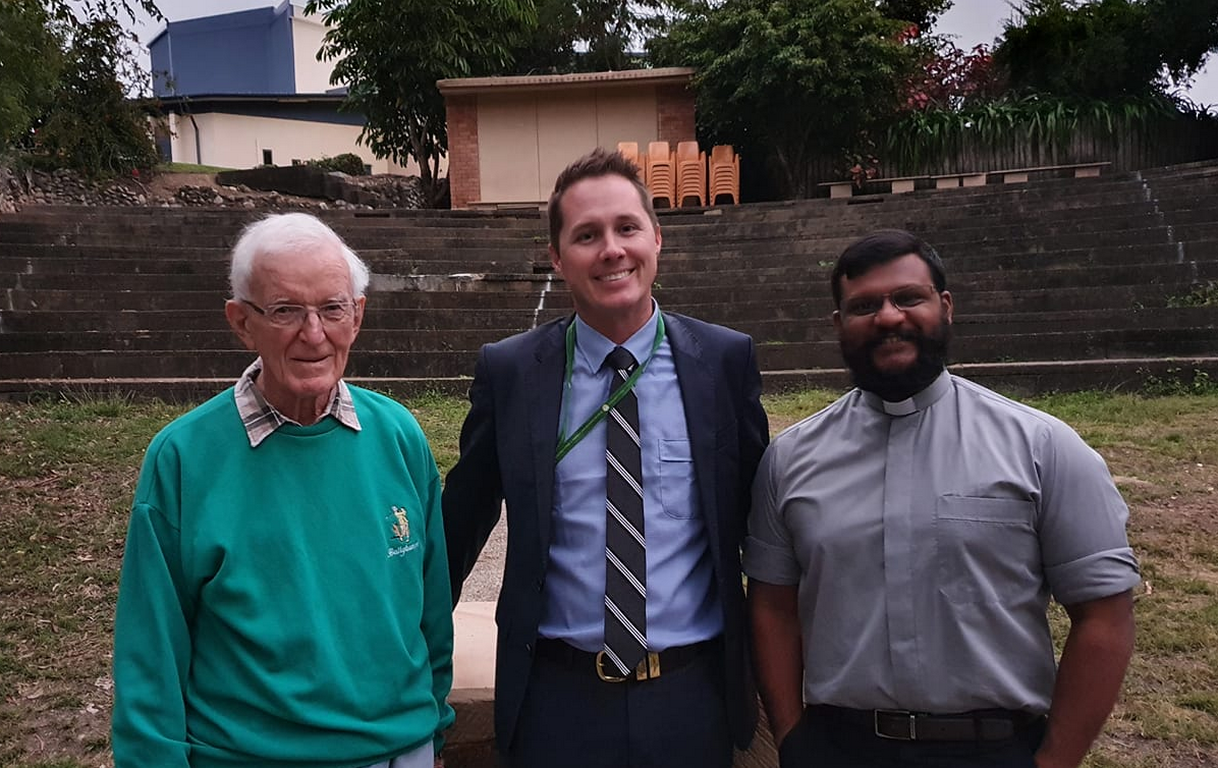Thanksgiving for Ordination
21 July, 2021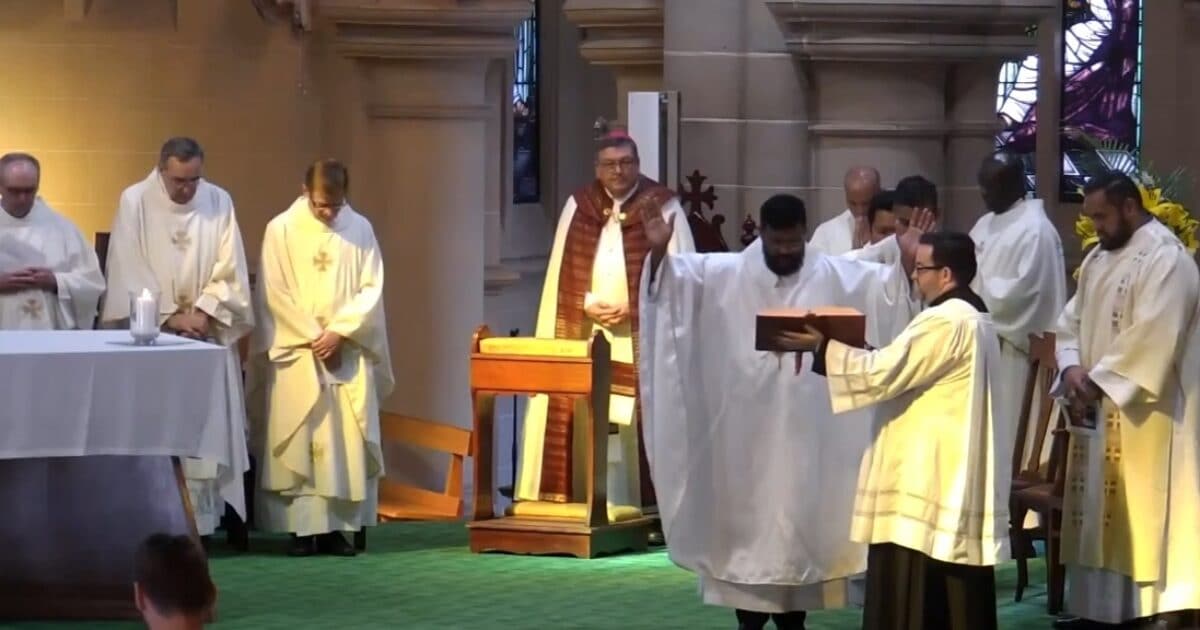
Since his ordination last month, Fr Ashwin has been visiting many communities who have supported him as he journeyed towards this new life of service in the church as a priest. He has taken this opportunity to thank the many, many people who have meant so much to him. These are just a few photos from his album!
On the 18th June, Fr Ashwin celebrated his Thanksgiving Mass with Bishop Michael, and the many priests and people who had travelled to Rockhampton for his ordination. This is the homily he preached at that Mass.
Thanksgiving Mass, Friday 18th June 2021
“If your eye is diseased, your whole body will be all
darkness; what darkness that will be!” (Mt 6:23).
Light and darkness, heaven and earth – that’s what we hear in today’s Gospel (cf. Mt 6:19-23). These aren’t themes that are unique to today’s Gospel, they run right through the whole Scriptural story – through our story. Think of creation: it begins in darkness… and God says “Let there be light” and creation gushes forth, bursts forward, and is fruitful. That’s the first command to creation, by the way – to “Be fruitful.” (Gen 1:28); light and fruitfulness are connected.
As I was nearing the end of my Seminary formation, I chose for the theme of my Master’s Thesis the mystery of the Cross. In fact, I took Bishop Michael’s Episcopal Motto as the title of my thesis, “Gloriari in Cruce” (meaning “Let us glory in the Cross”). I chose this because it seemed so strange to me that we would have this as the central symbol of our Christian faith, and that we would stubbornly keep it there – a horrific, traumatic image of a man tortured and killed on an instrument of execution. Why should this be the centre of our faith, where we hold our gaze? At first glance, it seems counter-intuitive… but if we gaze in faith, we soon see something more.
We see in the Cross the one who we know is the Light of the world. He comes into the world, and we hear in John’s Gospel that the world did not recognise him, that his own did not receive him. Even so, he is the Light. He comes, he lives with us, he knows what it is to be human. He knows all suffering, everything that we could possibly know; our fear, our shame, our misery, our sense of not belonging – everything. God comes to us and knows us down to the very depth of our being. There’s nothing that you have suffered that Jesus cannot empathise deeply with, that Jesus does not feel with you, and for you. So, we see the Light of the world.
The more we gaze upon this sight, the Light on a kind of cruel lampstand covered in darkness, we start to see something we did not expect: the Cross was meant to be an instrument of torture and death, but instead Jesus makes of it a tree that gives life to the world. So, we see the Tree of Life.
The Crucified Christ is a powerful symbol. We might ask, what does it do? Among other things, it helps us come to terms with the fact that light can come from darkness, by the grace of God; we can witness a recreation, a kind of new genesis. But we ought to also clarify what the Cross does not do. It does not make suffering and sin and shame disappear, like a rabbit into a hat. We all encounter these things, and at times they plague us. Does the Cross not save us from them? Yes, it does… but not as if by magic. The mystery of sin and darkness present in the world and in each of our lives must be done away with. Jesus has accomplished this work. But he calls us to share in his accomplishment. He took up his Cross and, conquering it, calls us to do likewise – to follow him through whatever, to not stop short, and to find eternal life and journey’s end.
This Gospel passage reminds us that Light and darkness are not equal opposites caught in a permanent stalemate. Actually, Light is greater than darkness, and can do many things which darkness cannot. It is possible for Light to break into darkness, but it is not possible for darkness to break into Light. This is why we store our treasures in heaven (cf. Mt 6:20), why we seek refuge in Jesus who is heaven’s Light. We run to him, we hide ourselves in him, and shrouded in his light, we are both defended from darkness and transfigured into lights ourselves.
Perhaps we feel on a personal level that in spite of seeking refuge in Christ, there are still plaguing darknesses and burdensome entanglements within us… I remember in my first year the Rector, then Monsignor Anthony Randazzo, said to me “Ashwin, the spiritual life is a little bit like a sunflower. It orients itself to the sun, along with all the other sunflowers. That’s the source, that’s where the life and the love and the grace is. In a peaceful rhythm of life, it follows the sun wherever it goes. That’s us looking to Christ.” I learnt just recently that when the sun can’t be found, sunflowers actually look to each other.
Friends, let us help each other to turn to God, to face him from as deeply in us as we can, so that darkness has nowhere to hide, nowhere in us that is untouched and unclaimed by God’s radiant love. In doing so, we will walk life’s journey, which is perilous, which has stresses and strains, and as Jesus invited us, take up our Cross and follow him – not because we love suffering; we know that suffering as an evil – but because with Christ we’re willing to do away with it. Looking to him, following after him, and coming more and more to bear his likeness, we will all become lights in the world, and trees of life bearing abundant fruit – fruit that will last.
Delivered in St Joseph’s Cathedral, Rockhampton.


